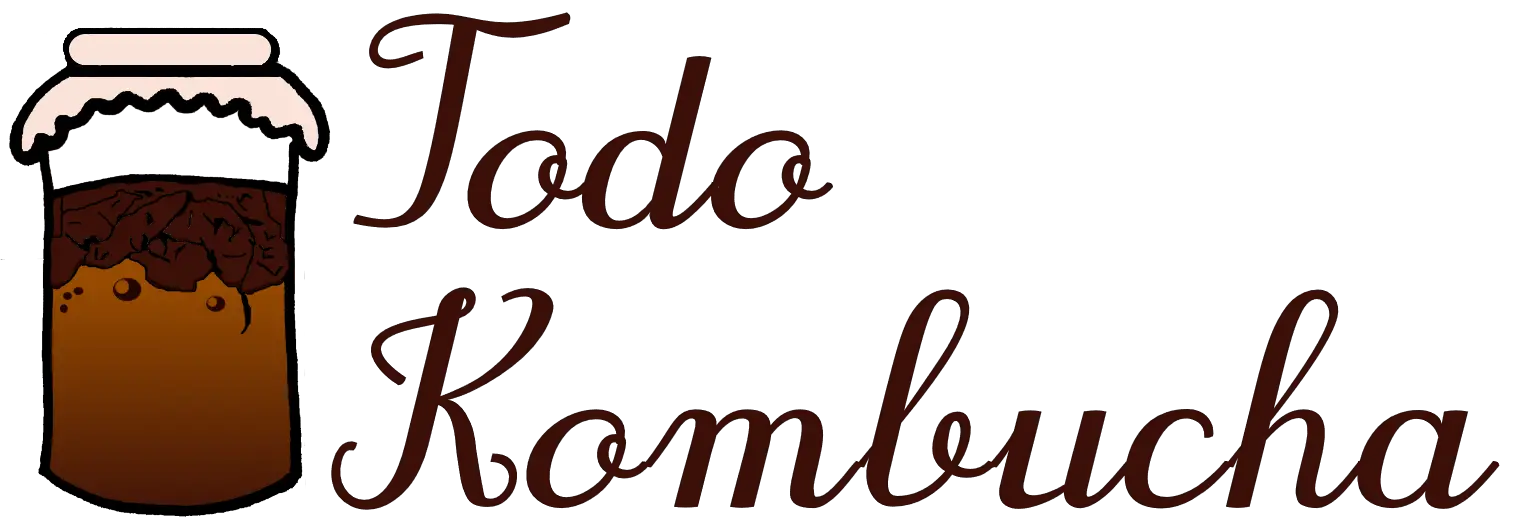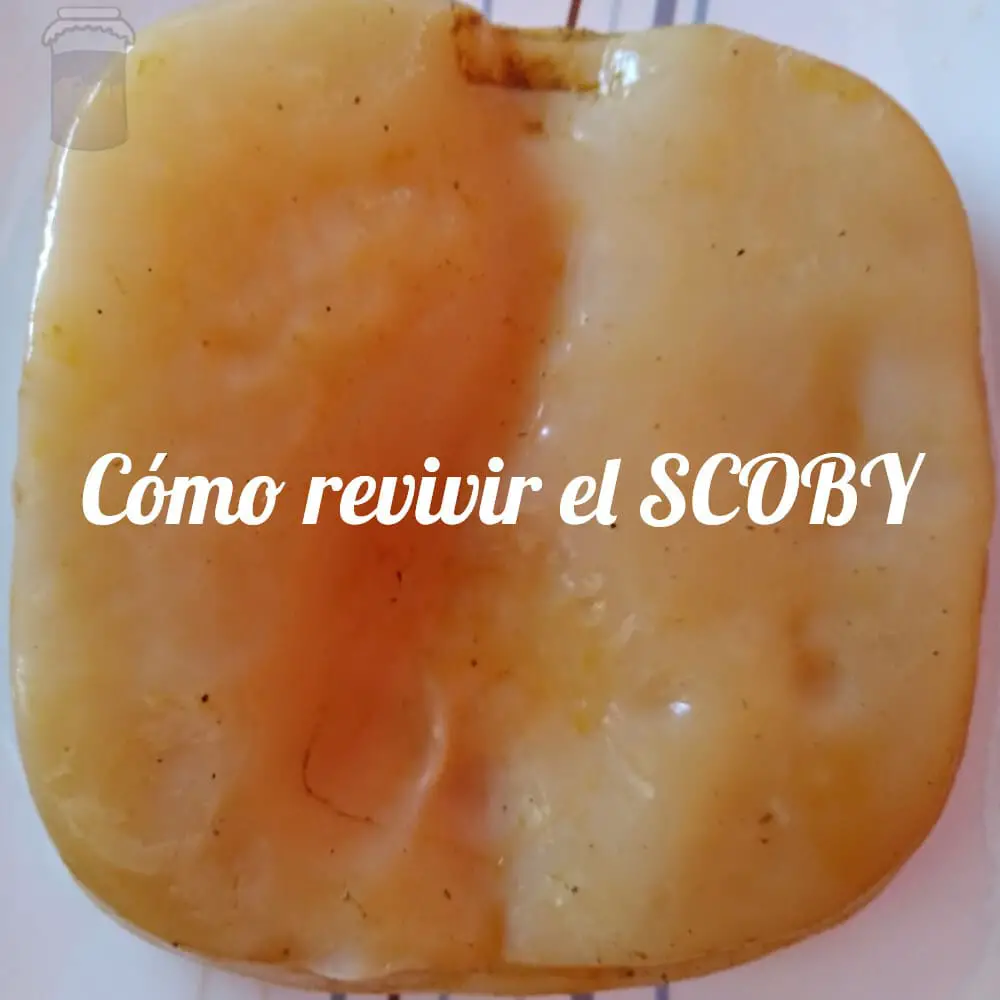Has it ever happened to us that some SCOBY does not look like the others, with a different color, it may be somewhat dry or we have neglected leaving it in the hotel longer than it should … when does this happen does it mean that my SCOBY has already passed to a better life?
In many situations the SCOBY may no longer be useful and we must get rid of it, although there may also be some life that can be recovered. It will sound strange, but the SCOBY can reach a state where it seems that it is “sleeping”, since the microorganisms no longer have the means to continue growing.
By providing them with substances and the right medium it is likely that this SCOBY that we had already given up for lost can be recovered and continue to be used to form new colonies.
What can I do to reactivate my SCOBY?
When the SCOBY at first glance seems to have no other chance, you can always try to “wake it up”. It is possible that it has passed a state of hibernation given the unfavorable conditions of the environment and if these improve, they could stimulate again its development and the growth of a new biofilm, if this does not happen it will mean that its SCOBY really died. [2]
To check if your SCOBY is still viable, you must first take each disc and wash them thoroughly with clean water and then leave them inside a previously sterilized container. Add table sugar and tea or broth from a previous fermentation, feeding any microbes that may remain viable, stimulating their growth and the formation of new layers in the culture.
When you do this you should wait 7 to 10 days (similar to the fermentation of kombucha) if the disc floats and forms a new biofilm it means that your SCOBY has come back to life, do not worry if at first it is still at the bottom of the jar, after a week you will see it floating on the surface, although it may not float due to the existence of holes or the shape of the SCOBY, but be healthy.
Why does this happen when you spend so much time in the hotel?
As time passes the fermentation reaches a point where the microorganisms end up with the little oxygen available, in addition the CO2 produced can block the transfer of nutrients between the broth and the biofilm over time, therefore, the bacteria are unable to continue growing and remain inactive entering a state of dormancy. [3]
When fermentation begins, the bacteria secrete the cellulose matrix to the surface of the fermentation broth forming a biofilm that corresponds to organized microorganisms floating on the surface and growing outwards in contact with air. The biofilm grows layer by layer and increases in thickness, forming what we know as SCOBY. [4]
During fermentation bacteria and yeasts gradually grow until they reach a limit around 6 to 14 days, there their growth stops, and they can even decrease in number, this happens because they finish with the elements necessary for their growth, enter a state of dormancy or die until the optimal conditions for their development return. [4]
In conclusion, this state of inactivity is caused by the lack of nutrients for the growth and fermentation of kombucha.
What should I consider before reviving my SCOBY?
You should first check if there is no mold and mildew contamination in your SCOBY, either by abnormal coloration such as green or white, rough, and hairy spots on the surface of the broth.
If so, it must be disposed of safely, do not try to clean or recover it, mold and mildew can make the consumer sick, in addition to producing toxins dangerous to health. [4]
The same applies if it may have any contamination by bacteria, recognizable by some change in its structure, it must be eliminated.
If it is not contaminated, you can proceed to the steps already mentioned, but taking into account the same hygienic practices when preparing kombucha. You should do this in a clean environment to reduce microbial contamination, wash your hands and rinse with kombucha or vinegar before handling the SCOBY. [5]
You can use a mature kombucha starter to dip your seemingly dead SCOBY in a previously sterilized container. It has been shown that there is greater microbial growth for the formation of biofilm in containers of wide opening, large surface and shallow, when they are of little surface and very deep the growth is prolonged in addition to being limited. [4]
How about using vinegar in kombucha?
Sometimes it is believed that vinegar could stimulate the latent microorganisms of the crop, it could work, but apparently it is not usually as effective.
In one study it was tested to reactivate a fungus-contaminated SCOBY, it didn’t work, but it was able to apparently remove contaminants.
During the preparation the fungus can deteriorate the biofilm information, it is possible that the use of vinegar on a regular basis for three days may be able to cause the death of the contaminating fungus, even so, the culture will not recover from the dormant state, unless the aforementioned method is used.
Even so, it is not certain that it can kill the fungus or mold completely, so any SCOBY with signs of contamination should always be removed. If that is not the case you can use the vinegar to disinfect, as we had already mentioned, and leave the SCOBY to make food or to generate another mother growing with mature kombucha. [6]
If the SCOBY is very old, can I still use it?
It is not recommended, the SCOBY can be reused several times to create new crops, but this will reach a limit where it begins to deteriorate forming black spots and losing its shape to a smaller and more irregular one.
The deteriorated SCOBY corresponds to the last layer of all those that are stacked towards the surface, that is, the one that is deeper in the container, so it is affected by the lack of oxygen and some bacteria and yeasts of the culture die, when the important thing is that they remain intact to inoculate new concoctions. [7] [8]
You can remove this layer by pulling it with your hands or a saw knife or scissors, then proceed to cut it into pieces separating the dark parts from the white or tanned ones, remove the black parts and the healthy pieces should be washed before storing them in a SCOBY hotel or returning them to the container where they were fermenting. [8]
Check out our post on what to do when the SCOBY grows a lot.
With this we conclude this article, hoping you liked it, we also leave you these articles quite interesting, which would help us enough you could share.
SCOBYs can be used up to 8 times before getting too old and must be eliminated. It can be tested by increasing its shelf life in pieces, but still its life will not be very long. [9]
So now that you know how to relive the SCOBY, you have to review these contents that can be complemented with reading and discover new things of this world as incredible as fermented ones.

